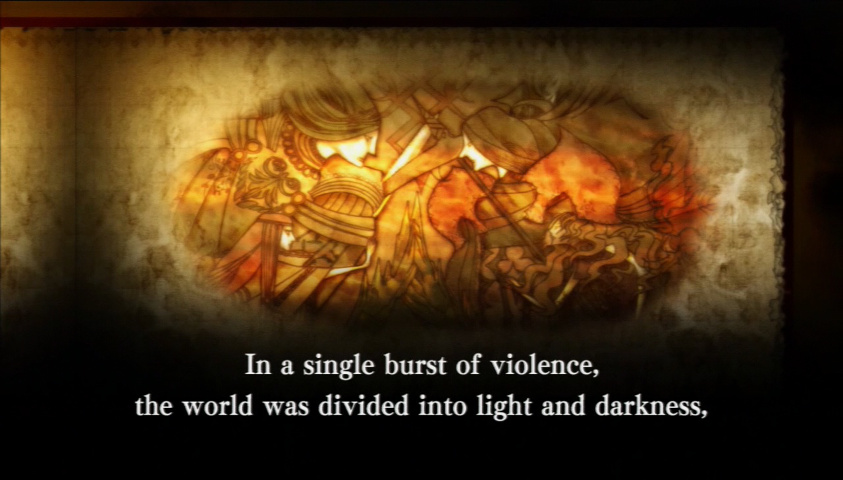Part 1: Chapter I: To Kill A God
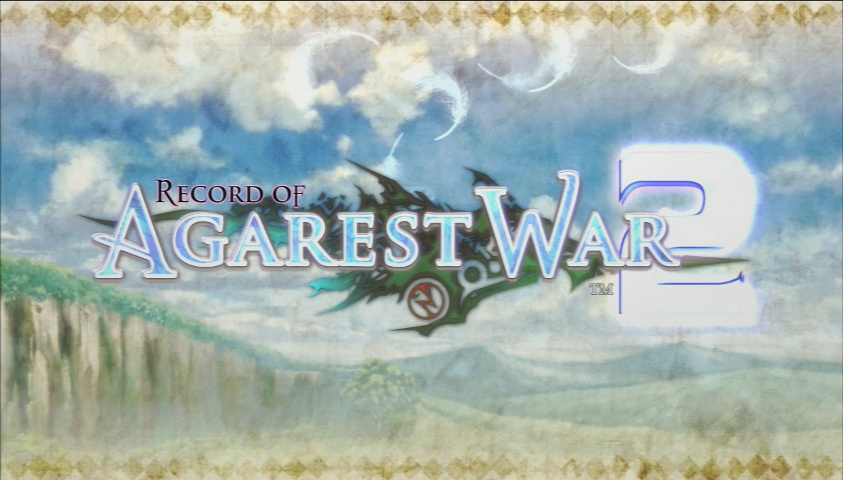
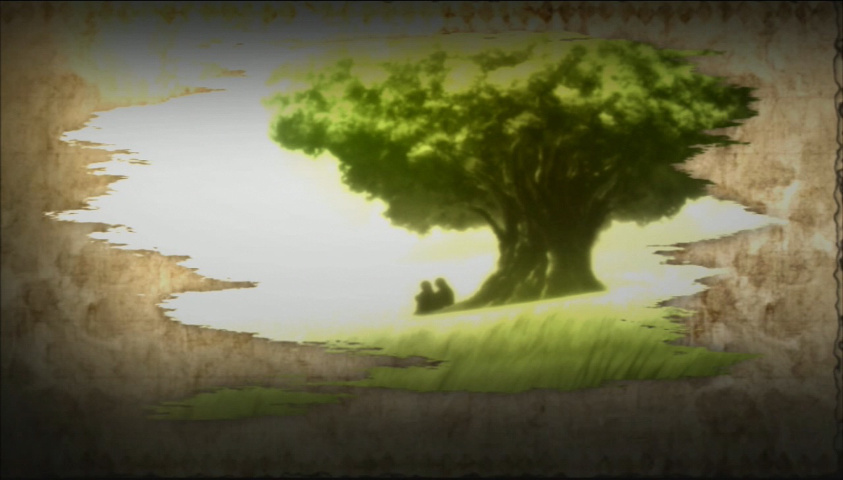
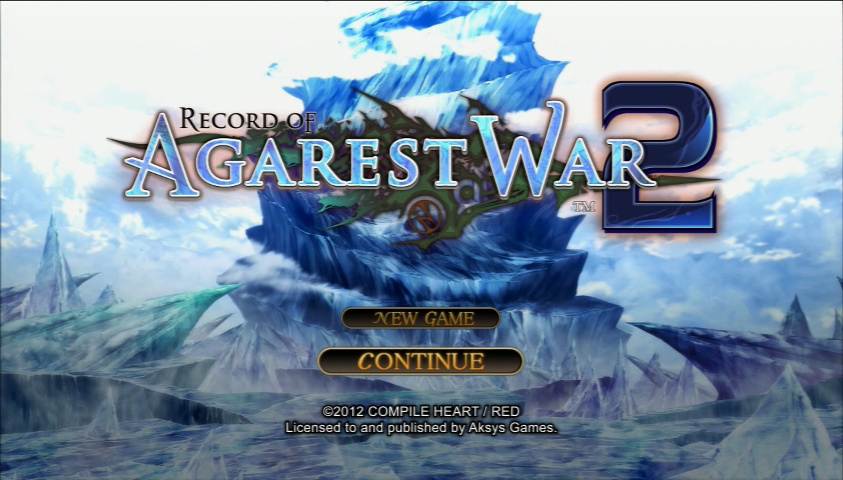
Welcome to Record of Agarest War 2. Before we begin the game, let's take a look at a few things you can do for a new game, assuming some conditions are met.
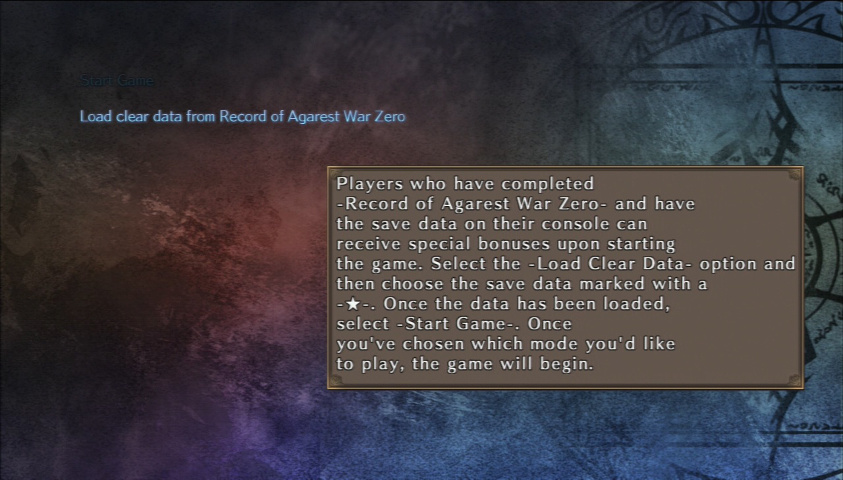
Like the game says, if you have clear data from Record of Agarest War Zero, you can load that data to acquire some bonuses for this game. The bonuses are nothing crucial, but they are helpful to have around and make the game fairly easy, at least early on, but you have to be fair to the people who haven't played the previous game, you know?
As it happens, I do, so I can show you first-hand what you'll get from Zero.
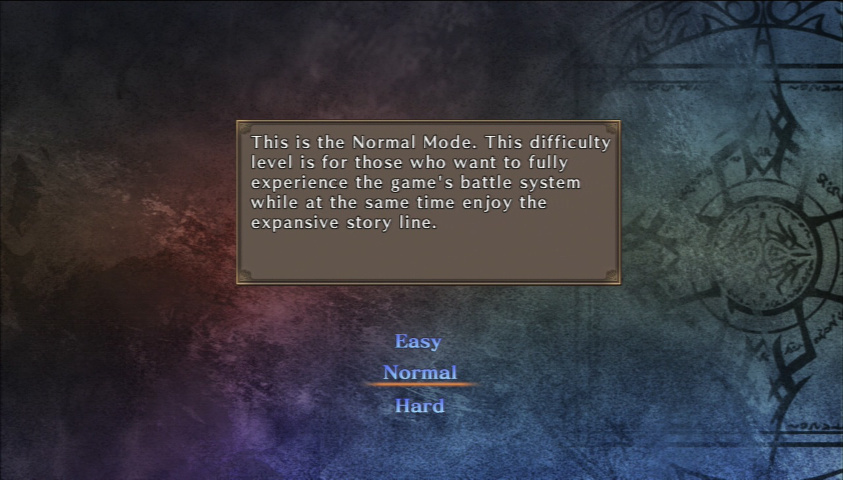
Before you start any new game, you can choose difficulties. If you're going for a "serious" run, there's really no choice other than Hard. This game is a bit too easy on Medium and Easy, and not only that, you gain no bonuses from playing this game on those modes. The game says that on Hard mode, all enemy stats are increased, but on the plus side, you get more Soul Coins from defeated foes, and, while it doesn't mention this, completing the game on Hard grants you access to a post-game challenge dungeon. No story elements change between difficulties.
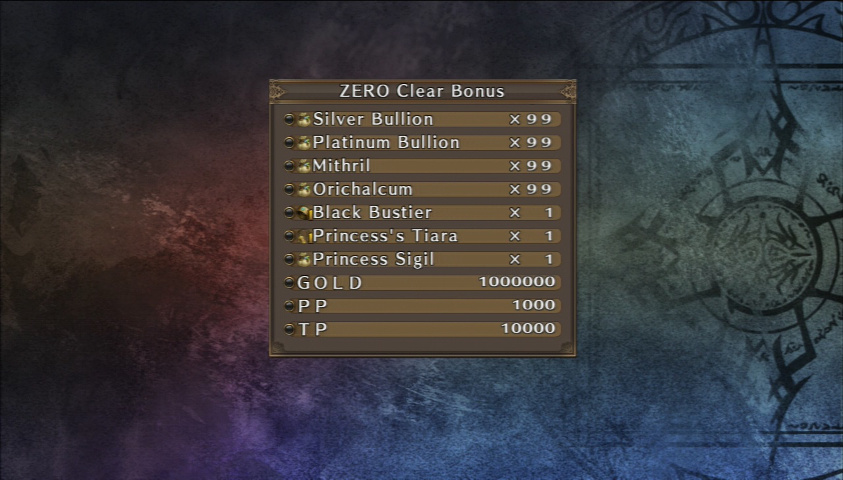
These are the Zero clear bonus things. Even if you don't know what all of this means, still looks impressive, right? It is. Orichalcum is a very valuable material for late-game purposes, and the Black Bustier and Princess Tiara are very strong pieces of armor (both are female character-only equipment), and both items can only be acquired very, very late in the game otherwise (indeed, if you get the Bad Ending, you'll never get them normally). The Princess Sigil is a crafting item that you can't make use of until very late in the game.
But before we begin, one more new game thing. For this to show up, you need to actually complete the game by getting the True Ending or Bad Ending, and then load up that save. If you get the True Ending, you'll get a prompt if you want to continue the game after the plot is over. If you decline, you'll be asked if you want to start a new game. If you load up a Bad End save, you'll jump right to the difficulty select, then this...
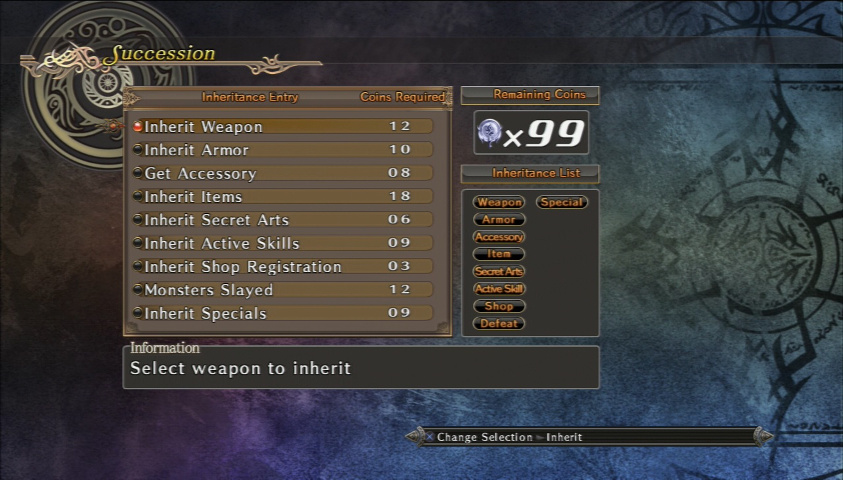
You'll be greeted by this screen, once you've chosen your difficulty. Anyone familiar with the Grade Shop in Tales games should be familiar with the concept behind this. By acquiring Soul Coins from defeating enemies in-game, you'll gradually build up your stock for buying things for New Game+. To sum all these options up, you can basically carry over all equipment and skills from your previous game to use in a new one. Even if you don't choose anything from this menu, all TP, PP, and Gold from your last game is carried over.
While my main playthrough will be a complete vanilla run (no Zero bonuses), I will be running a shadow playthrough using my last game to discover things in the game that I'll mention in the LP. I intend for this LP to the most complete source of info about this game around. Well, enough introduction, let's start a new game and jump right into it. We've got a lot of anime in front of us. Anger, Vengeance, And...
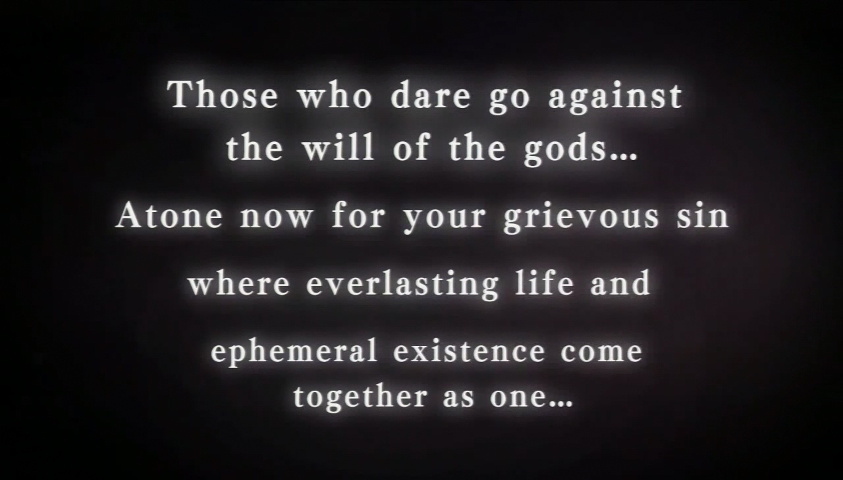
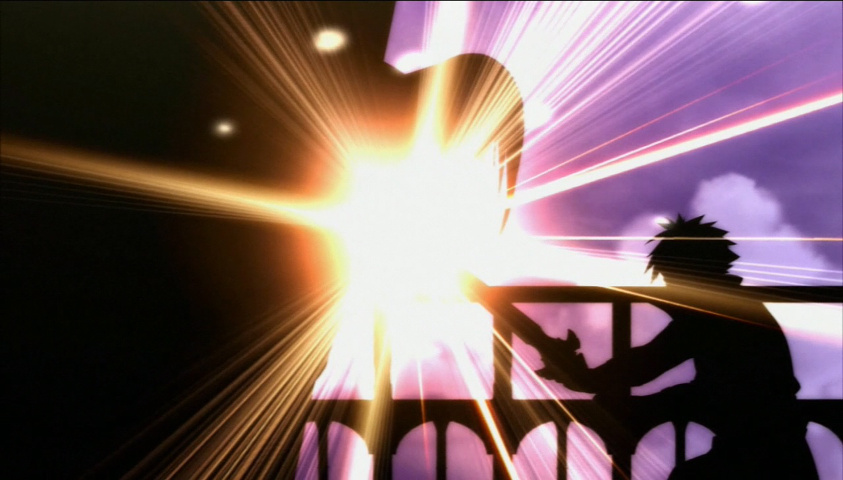
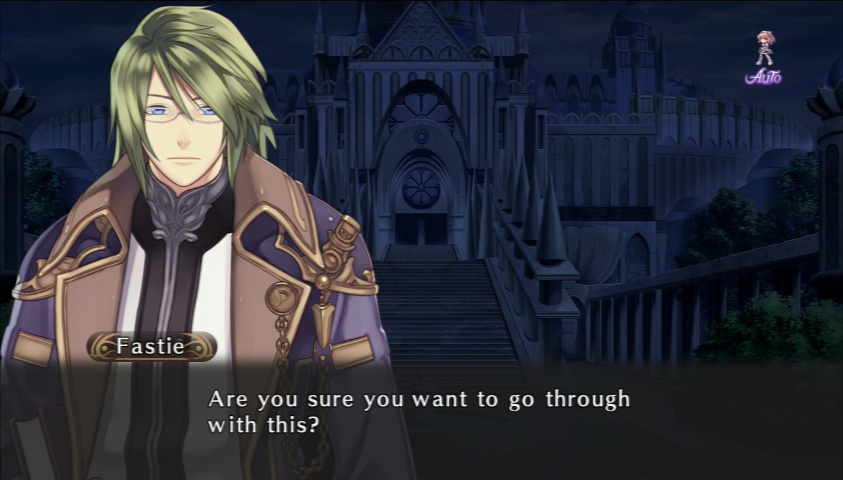
As a note, there's three options for advancing text. Pressing X like normal to move text boxes, pressing start to auto-scroll through the text, and pressing square to blaze through the text. Since I don't speak Japanese and I can't always tell when the voice actor is going to finish speaking their line, I'll be leaving auto-scroll on at all times.
Oh, and there is absolutely no English language option for this game. It's Japanese all the way, baby. Gotta say, I'm pretty fine with localization companies not needing to feel the pressure to dub games and anime if they're not big enough to afford it. I'd rather have the games in English than not at all. Especially in this game, with its War and Peace-length script, and it's all voiced.
 Yeah...
Yeah... But by doing something like this, you might...
But by doing something like this, you might... As I said before, I have no intention of turning back.
As I said before, I have no intention of turning back. What do you propose to do with the sword once you have it?
What do you propose to do with the sword once you have it? ...
... It might have been better if we had never met.
It might have been better if we had never met. I feel bad about getting you involved. However...
I feel bad about getting you involved. However... No, it's all right. All of this was set into motion because I brought up the subject of the -sword-in the first place. I suppose that it must've been fate that brought us together. Ah, I didn't mean anything weird by that, you understand. But, yeah... Coincidences are inevitable events without obvious connections. Nothing happens by chance in this world. If that's the case, then our meeting and your determination to retrieve the sword were inevitable. Indeed, and as for the punishment of the gods...
No, it's all right. All of this was set into motion because I brought up the subject of the -sword-in the first place. I suppose that it must've been fate that brought us together. Ah, I didn't mean anything weird by that, you understand. But, yeah... Coincidences are inevitable events without obvious connections. Nothing happens by chance in this world. If that's the case, then our meeting and your determination to retrieve the sword were inevitable. Indeed, and as for the punishment of the gods... Enough talk. Let's go.
Enough talk. Let's go.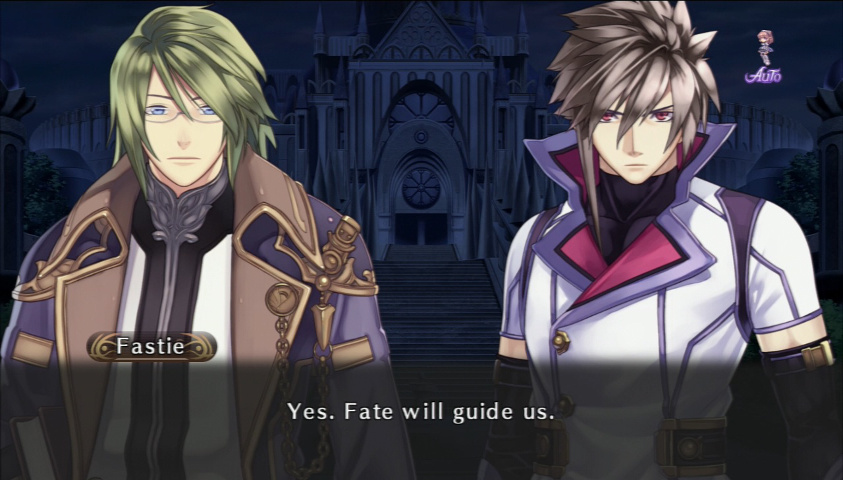
 To the future where we belong...
To the future where we belong...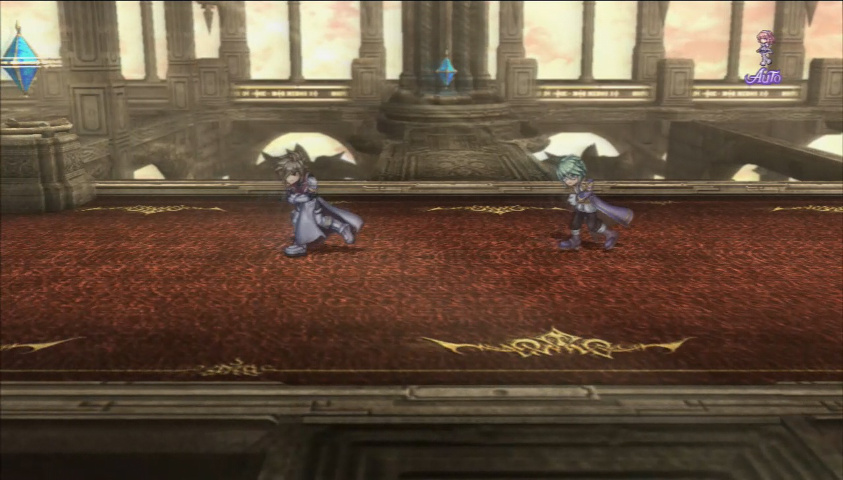
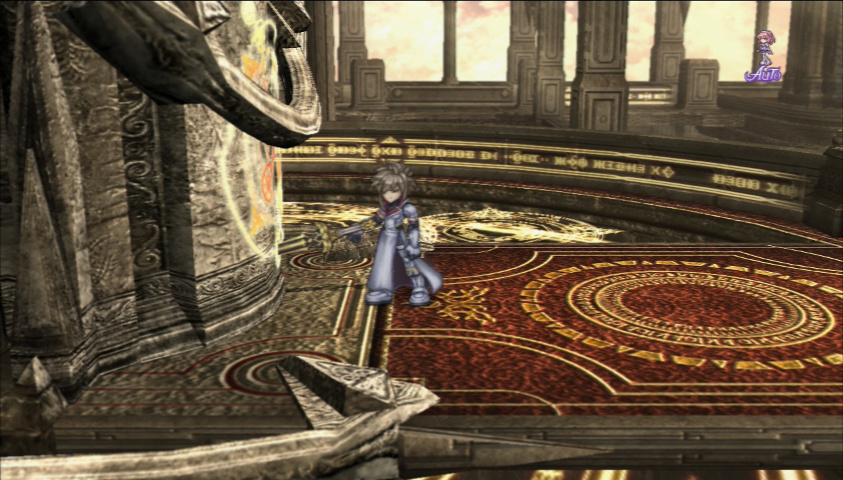
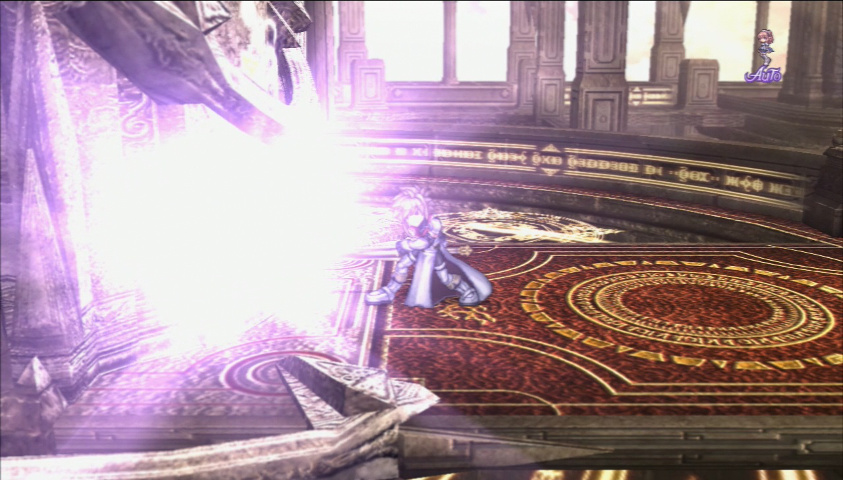
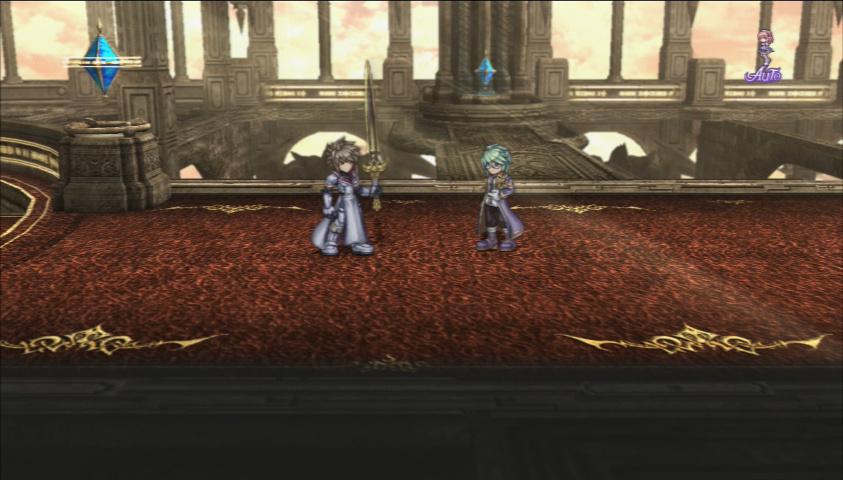
 It came out...
It came out...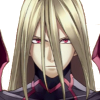 Why did you break the seal?
Why did you break the seal? Are you a -god-?
Are you a -god-?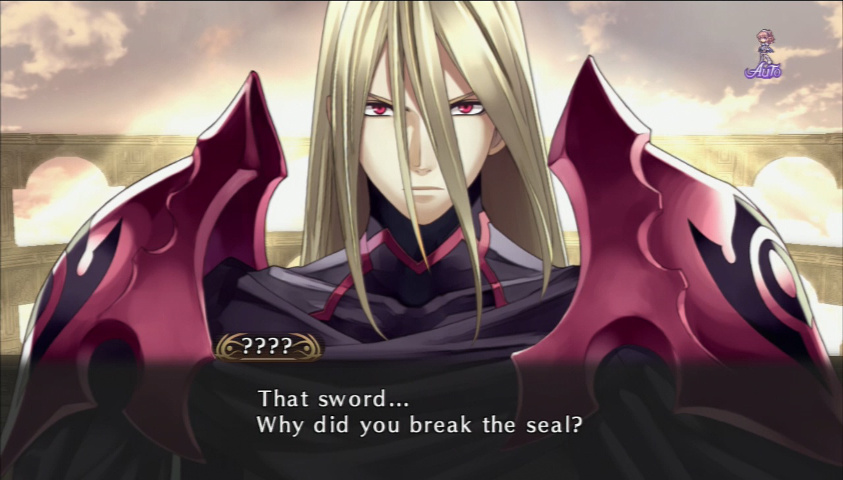
This fellow is Chaos (the game will always pronounce it "Kaos"), who was in the first two games. While not having much plot relation to the events of Zero, he is a major character in the first game's story.
 Silence! I asked you a question. Are you a god?
Silence! I asked you a question. Are you a god? And if I was, what would you do then?
And if I was, what would you do then? So gods really do exist. Then why didn't you lend an ear to my pleas? You ignored me, even after me and my entire clan sacrificed themselves in service to you!
So gods really do exist. Then why didn't you lend an ear to my pleas? You ignored me, even after me and my entire clan sacrificed themselves in service to you!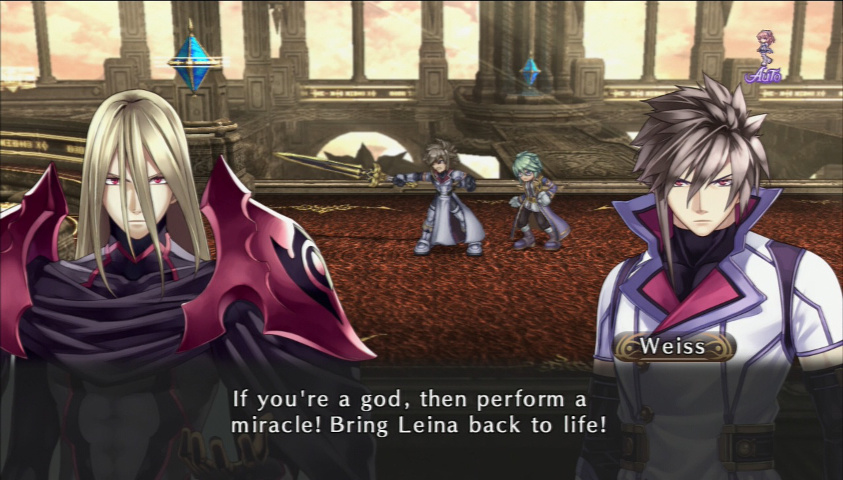
 Is there any meaning or value in praying for others to create miracles for you? If you could get anything you wanted simply by praying, miracles would cease to be miraculous. Miracles only come to those willing to do anything in their power to make them a reality, and through their efforts obtain that what they most desire. And as I asked before, what value does a -miracle- have, when it is simply given to you by another?
Is there any meaning or value in praying for others to create miracles for you? If you could get anything you wanted simply by praying, miracles would cease to be miraculous. Miracles only come to those willing to do anything in their power to make them a reality, and through their efforts obtain that what they most desire. And as I asked before, what value does a -miracle- have, when it is simply given to you by another? Does this mean you cannot perform miracles as they are thought of by mankind?! How much blood will it take to slake your thirst? Must the world be drowned in the blood of all mankind?! Will it only be enough once you've slaughtered the entire human race and destroyed the world?!
Does this mean you cannot perform miracles as they are thought of by mankind?! How much blood will it take to slake your thirst? Must the world be drowned in the blood of all mankind?! Will it only be enough once you've slaughtered the entire human race and destroyed the world?! ...
... If you're a god, then use your powers to give me a miracle! If you can not or will not... Then there's no reason for you to exist! It's time for you to meet your end as a human and be left to rot in an unmarked grave!
If you're a god, then use your powers to give me a miracle! If you can not or will not... Then there's no reason for you to exist! It's time for you to meet your end as a human and be left to rot in an unmarked grave!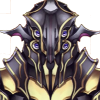 Insolent human. Lord Chaos, allow me to take care of this insect.
Insolent human. Lord Chaos, allow me to take care of this insect. There's another god here besides Chaos...?! That can't be...!
There's another god here besides Chaos...?! That can't be...!

Summerill was the main antagonist of both the first game and Zero. In this game, though, his character design is completely different. In the first two games, he appears a big, purple jellyfish-like creature, with no dragon mount, massive scythe, or helmet.
 Ignorant fool who dares threaten a god. You will pay for your sin with your life!
Ignorant fool who dares threaten a god. You will pay for your sin with your life!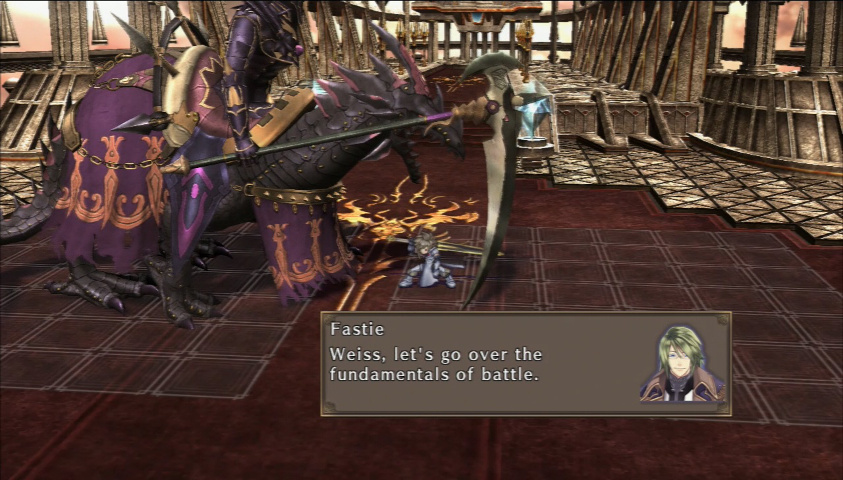
I believe that's my job, Fastie. First, let's take a look at the main battle screen.
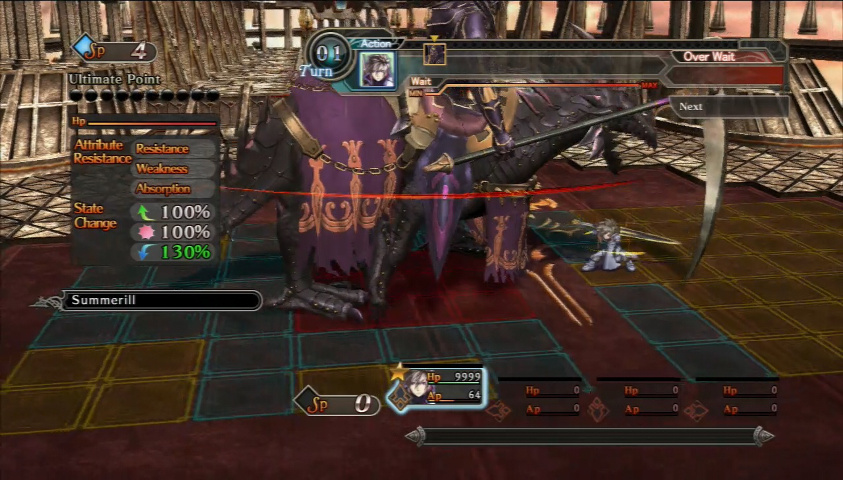
Several elements comprise battles in this game. First, the bottom of the screen shows your active characters, their HP, and AP. The AP, or Action Points, of a character influences how many offensive actions they can take when they are attacking. Weiss here has 64 to start the fight, so he can do quite a bit of attacking before yielding his turn to Summerill. Don't worry about the little icons next to each panel. I'll explain those later.
The top bar shows what the turn order is, and the Wait. Wait is influenced by how many attacks a character does in-battle, and the more attacks a character does, the more Wait builds up, and the farther back in the turn order they are. Severely overattacking with a character will put them in a state called Over Wait, which means they have to sit the fight out until a few turns go by and their Wait goes down naturally. At this point, they may return to attacking. Wait decreases naturally over the course of turns, also indicated at the top of the screen.
The panel on the left side of the screen is your information on the enemy being struck. You can see their SP (don't worry about that now), their Ultimate Points (to be explained shortly), their HP, their elemental resistances / weaknesses, and State Change. In this game, there are three states an enemy can be put into: Burst, Downed, and Stunned. Burst attacks correspond to the triangle button, Downed attacks correspond to the X button, and Stunned is for the square button. When an enemy is in a certain state of being attacked, they can only be attacked by the button of the state they're in (so, if they're Downed, they can only be hit by attacks assigned to the X button and attacks mapped to the circle button). For the purposes of this game, those numbers under State Change indicate if the enemy takes more or less damage from being in a certain state. In this case, Summerill takes 30% more damage if he's in a Downed state.
Now, all of this state discussion is predicated on breaking the enemy's guard. When you begin the attack on an enemy, they'll put up a translucent shield in front of them to represent this. Let's go to the battle phase to talk more about this.
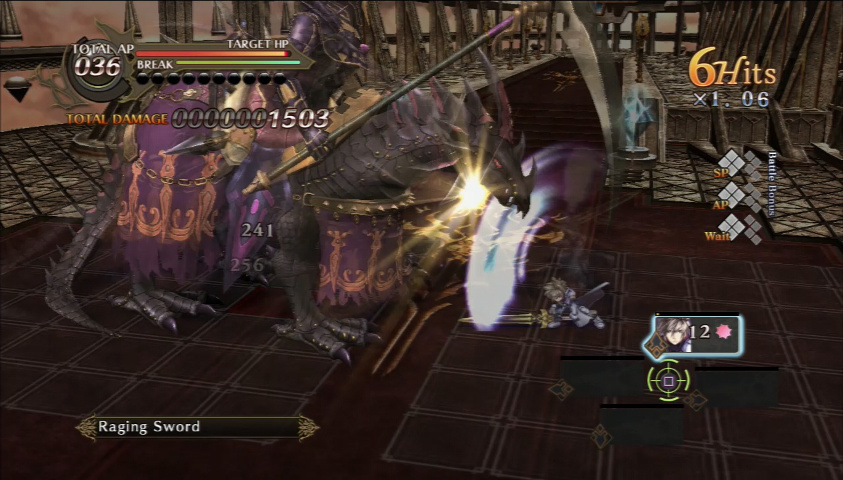
You can still see the enemy's HP, but you can also see the target's Break gauge. Summerill will never put up the shield I mention, but regular enemies will. You have to break through the aforementioned shield before the enemy is vulnerable to state change attacks. You have to break down the enemy's break gauge by 1/8th before they drop their shield, take more damage from attacks, and you can put them in various states of damage.
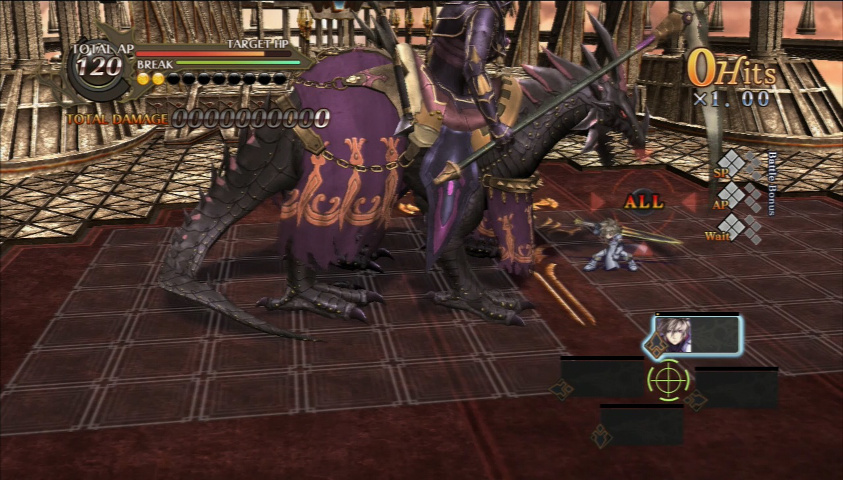
Ultimate Points (the yellow orbs in the top left) are the next concept to be introduced. Normally, you acquire Ultimate Points by getting the Ultimate Gauge to 100%. The Ultimate Gauge is related to the enemy's break gauge, but not directly. For example, let's say you take off 50% of an enemy's break gauge before breaking off your attack for lack of AP. On the next turn, you take off another 50%. By getting to 100%, you get a single Ultimate Point. Of course, if you break an enemy in a single attack, you get a free Ultimate Point, and the enemy takes even more damage from regular attacks. If you want to break off an attack manually, simply tilt the left control stick in any direction or simply cease attacking for a few moments and the game will end your turn for you.
As you can see, you can stock up to 10 Ultimate Points, if you so choose. Ultimate Points are used to launch -Original Skills-, which is fancy talk for super moves. Every character in the game has two, and in exchange for their power, all Original Skills significantly raise a character's Wait, and cost significant AP (level 1 costs 32 AP, level 2 costs 64). For this fight, though, we can simply appreciate Weiss' two Original Skills. As the game notes, the super move assigned to L1 spends 1 Ultimate Point, and the R1 attack spends 2. Of course, the latter is invariably far more powerful.
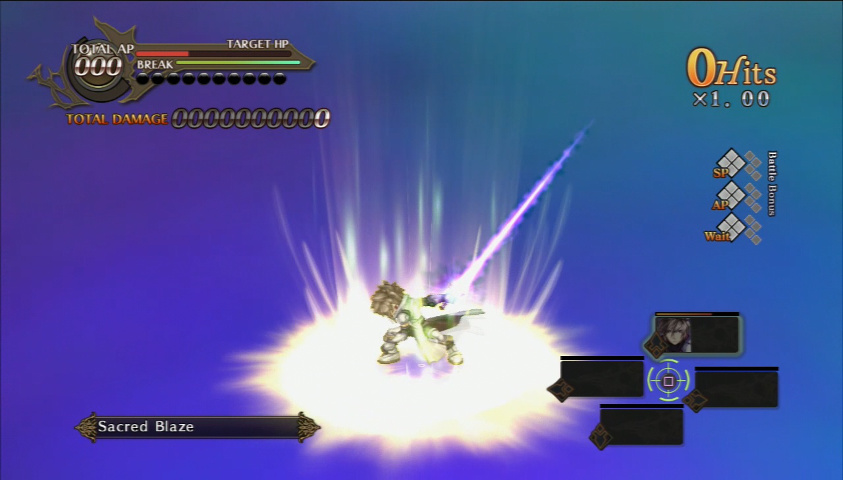
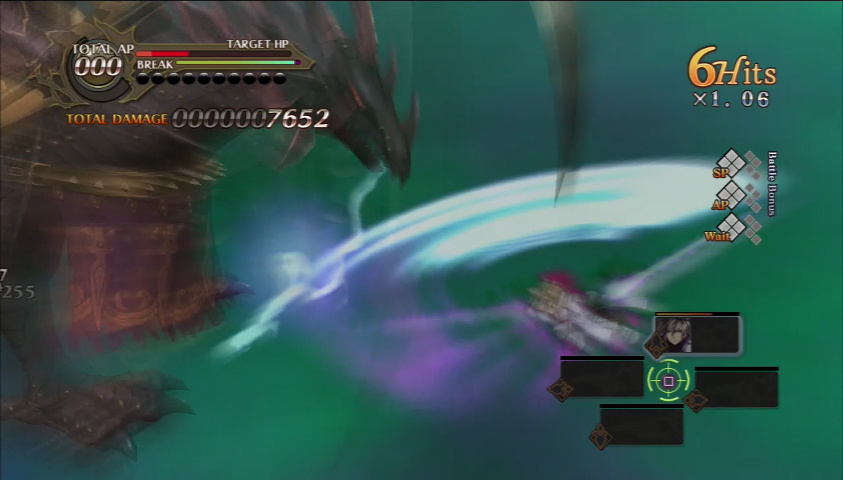
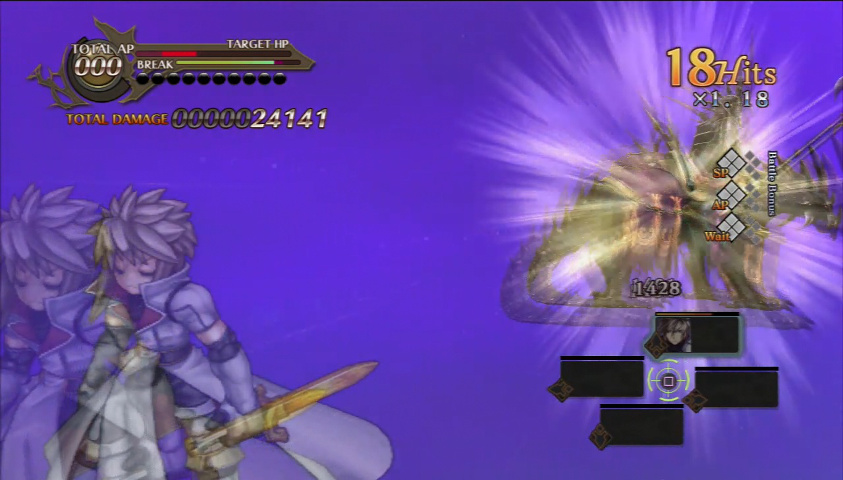
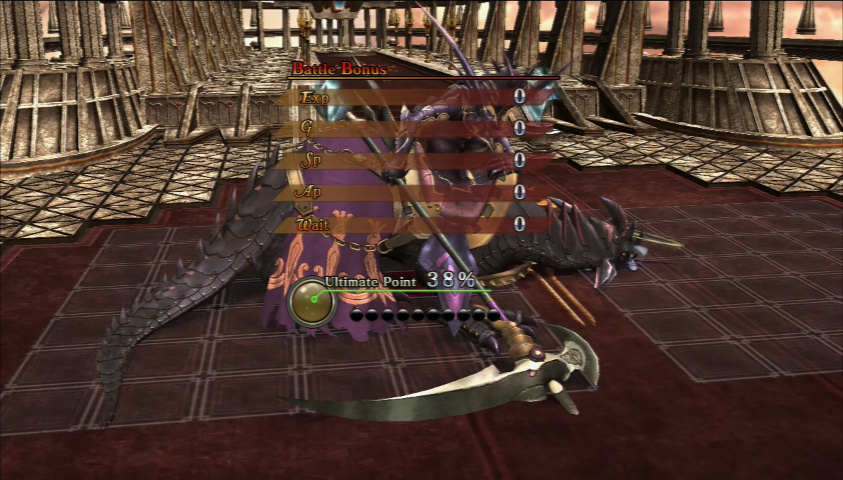
Once an attack is done, this pops up. EXP shows how much experience you receive from slaying you target and how much Gold you get, but those are only not 0 assuming the target is defeated. For the others, SP refers to many Special Points were gained from the offensive, AP refers to how much AP was gained (another thing that bears explanation later), and finally, how much Wait was accumulated.
Now, time to finish up the prologue. Record of Agarest War
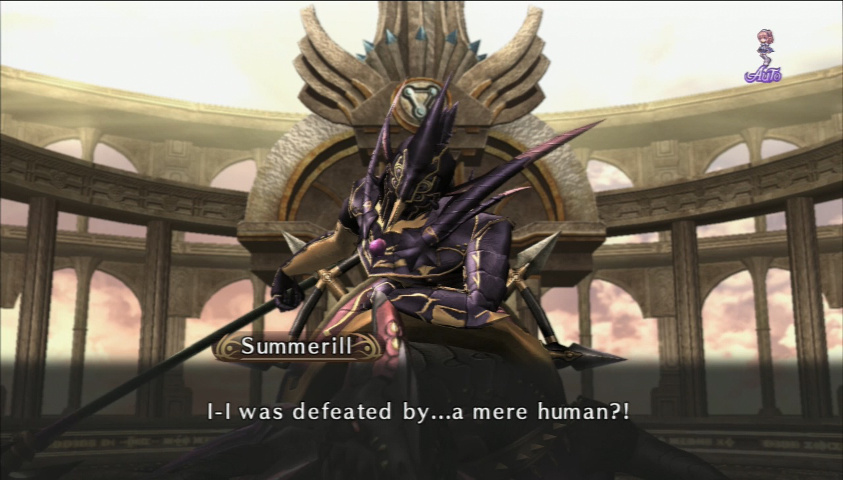
 Uuurraaaaa!
Uuurraaaaa! You're next, Chaos!
You're next, Chaos! ...
...
